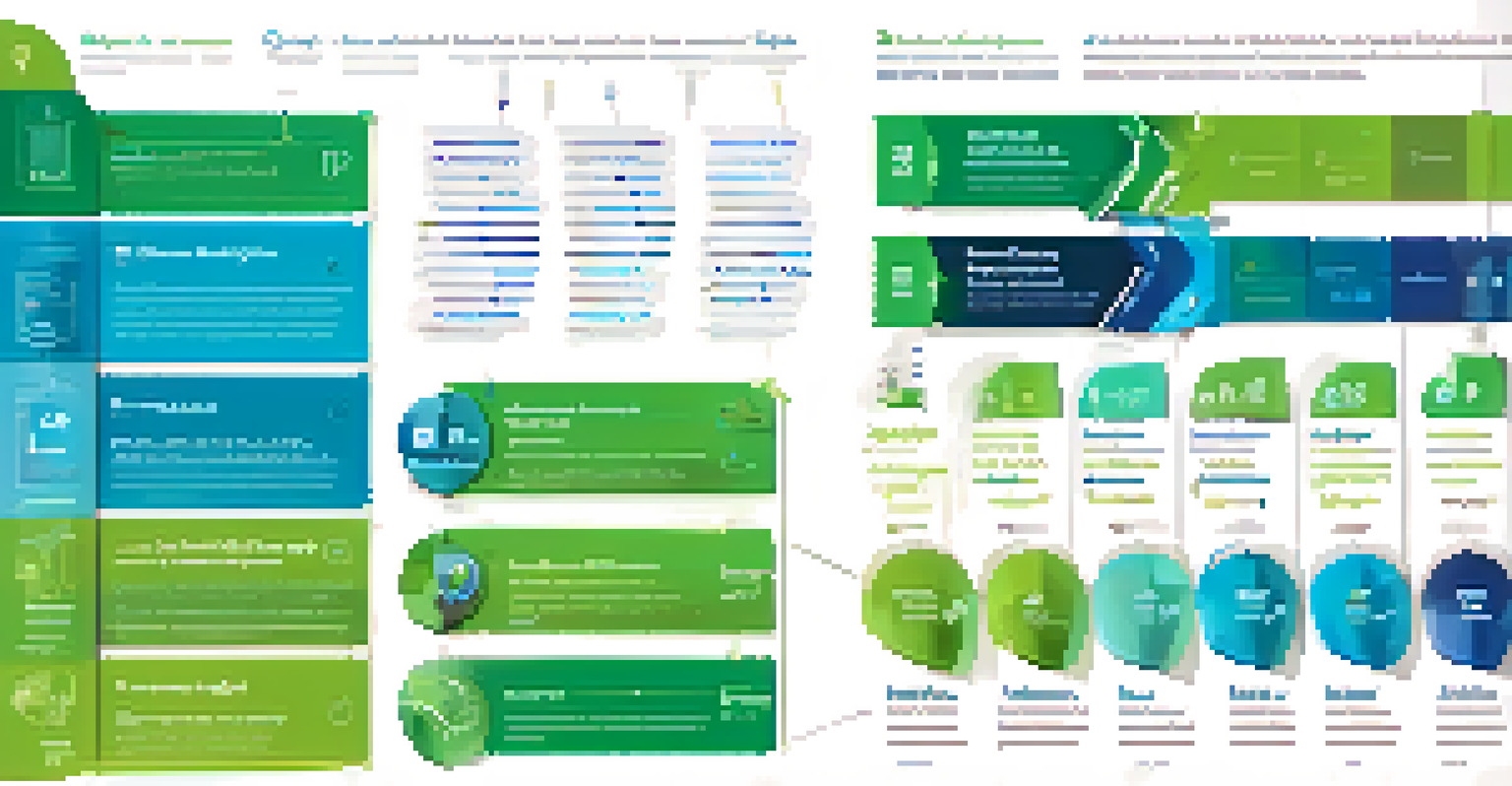The Influence of Typography on User Experience in HCI

Understanding Typography in Human-Computer Interaction
Typography refers to the style, arrangement, and appearance of text. In human-computer interaction (HCI), it plays a crucial role in how users perceive and interact with digital content. A well-chosen typeface can evoke emotions, enhance readability, and guide user actions, making it a vital element in design.
Typography is the craft of endowing human language with a durable visual form.
When we think about typography, it’s easy to overlook its impact on our daily digital experiences. Consider how a friendly font can make an app feel more inviting, while a formal typeface might create a sense of professionalism. Simply put, the right typography helps set the tone and context for the content.
Understanding the basics of typography is essential for designers and developers alike. It's not just about picking a pretty font—it's about creating a harmonious visual experience that resonates with users and facilitates their tasks.
The Role of Readability in User Experience
Readability is a crucial aspect of typography that directly affects user experience. It refers to how easy it is to read text, which encompasses factors like font size, line spacing, and contrast. Poor readability can lead to frustration, prompting users to abandon the content altogether.

Imagine trying to read a web page with tiny, cramped text. It’s like trying to decipher a secret code! On the other hand, clear and spacious typography invites users to engage with the material comfortably. Designers must prioritize readability to ensure users can absorb information effortlessly.
Typography Shapes User Experience
The right typography enhances readability, evokes emotions, and guides user actions, making it essential in digital design.
Moreover, different audiences may have varying readability needs. For instance, older users may benefit from larger fonts and higher contrast, while younger users might prefer trendy, modern designs. This consideration highlights the importance of user-centered design in typography.
Emotional Resonance Through Typefaces
Typefaces are not just functional; they carry emotional weight as well. Each font can evoke specific feelings—serif fonts often convey tradition and reliability, while sans-serif fonts feel modern and clean. This emotional connection can significantly influence how users perceive a brand or product.
Good typography is like good lighting; it enhances your experience and can make your message shine.
For example, think about your favorite coffee shop. The warm, inviting script font used in their logo likely contributes to the cozy atmosphere you associate with the place. When designing for user experience, it's essential to align typography with the intended emotional response.
Consequently, designers should carefully consider the emotional implications of their typographic choices. By selecting fonts that resonate with users, they can enhance engagement and foster a deeper connection with the content.
Hierarchy and Information Flow in Design
Typography also plays a pivotal role in establishing hierarchy, guiding users through information seamlessly. By varying font sizes, weights, and styles, designers can create a clear visual structure that helps users understand what’s important. This hierarchy directs attention and improves comprehension.
Think of a news article; the headline grabs your attention, while subheadings break down the content into digestible sections. This intentional use of typography not only makes the text more scannable but also enhances the overall reading experience.
Cultural Context Affects Typography
Designers must consider cultural interpretations of typefaces to ensure their choices resonate appropriately with diverse audiences.
Effective typographic hierarchy ensures that users can easily navigate complex information, leading to a more satisfying user experience. In this way, typography becomes a powerful tool for communication in digital interfaces.
Cultural Considerations in Typography Choices
Typography is not a one-size-fits-all solution; cultural considerations are essential when selecting fonts. Different cultures may interpret typefaces in varied ways, and what resonates in one context may not be effective in another. Understanding these nuances is crucial for global designs.
For instance, certain fonts may evoke modernity in Western cultures, while the same typeface might appear outdated in Eastern contexts. Designers must conduct thorough research to ensure their choices align with the cultural backgrounds of their target audience.
By respecting cultural differences in typography, designers can create more inclusive and relatable experiences. This attention to detail builds trust and encourages engagement across diverse user groups.
Accessibility and Inclusive Typography Practices
Accessibility is a critical aspect of user experience, and typography plays a significant role in making digital content inclusive. Designers need to consider how different users, including those with visual impairments, interact with text. Implementing accessible typography can improve usability for everyone.
Using high-contrast colors, legible fonts, and appropriate sizes ensures that all users can engage with content effectively. For instance, sans-serif fonts are generally easier to read on screens, making them a popular choice for accessible design.
Accessibility is Key in Design
Inclusive typography practices, such as high contrast and legible fonts, improve usability for all users, including those with visual impairments.
Moreover, adopting guidelines like the Web Content Accessibility Guidelines (WCAG) can help designers create typographic solutions that cater to diverse needs. By prioritizing accessibility, designers not only comply with regulations but also enhance the overall user experience.
The Future of Typography in User Experience Design
As technology continues to evolve, so does the role of typography in user experience design. With advancements in web fonts, variable fonts, and responsive typography, designers have more tools than ever to create engaging and dynamic text experiences. This flexibility allows for greater creativity and personalization.
For example, variable fonts enable designers to adjust weight, width, and slant, providing a spectrum of choices within a single font file. This adaptability enhances user experiences by allowing for smoother transitions and more tailored designs.

Looking ahead, the integration of typography with emerging technologies such as augmented reality (AR) and artificial intelligence (AI) will further transform how users interact with text. Embracing these innovations will be key to staying relevant in the ever-changing landscape of HCI.